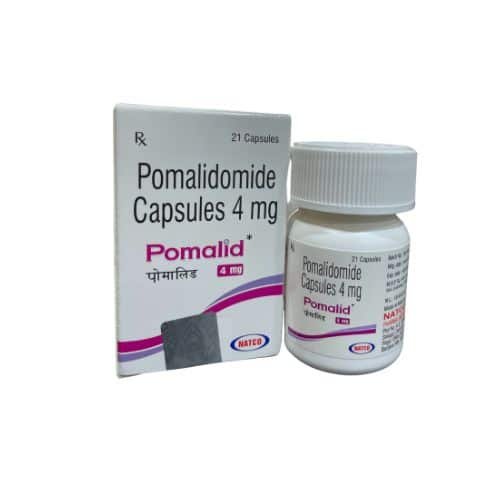pomalyst cost sells for a lot of money, making it difficult for people with multiple myeloma and other diseases to afford the medication. As costly as this medication is, people ask the reason for its high price and what contributes to that price. Here you will find detailed information on what makes up Pomalyst price, how to look for the best alternatives and possible ways to stick to a reasonable Pomalyst price range.
- Research and Development Costs
To fully explain why Pomalyst costs so much one of the key drivers of the cost is the R&D expenditure. Pomalyst is not a typical drug; its development necessitates numerous clinical trials, years of testing, and a significant investment. Due to the high price of their products, manufacturers are able to recover these expenses. Also, as a specialized medication Pomalyst is aimed at a more limited patient base and, to cover the costs associated with research and development of the drug, Pomalyst can be significantly more expensive. - Regulatory and Manufacturing Expenses
It is an expensive process to manufacture a high quality of medicines because the manufacturing process involves following strict regulatory policies which makes the Pomalyst medication expensive. Due to the complex manufacturing process and use of cutting-edge technology, Pomalyst, a precision drug, also comes with relatively high manufacturing costs. 3. Patent Protection and Exclusivity
Pomalyst is patented and this means that the company that makes it has a legal monopoly to its production and sale for some time. The company has been forced to charge a high price for its products because there is no pressure to sell generic products because of the limited competition. Expensive alternatives to Pomalyst are caused by the patent exclusivity that hinders the possibility of their development. - Limited Patient Pool
Pomalyst, in contrast to treatments for common illnesses, focuses on a select few patients, primarily those with relapsed or refractory multiple myeloma. Because there are fewer customers for Pomalyst because there are fewer patients, the cost of the drug is higher. 5. Market Dynamics and Regional Pricing
The price of pomalyst varies from country to country due to differences in the health care system, insurance, and economic laws. Pomalyst, for instance, is more expensive than in other nations, like India, where the government has increased its scrutiny of drug prices. A few studies have shown that costs for Pomalyst differ in terms of both availability and price, so patients needs to check out as many options as possible before buying it. - Assistance Programs and Insurance Coverage Therefore, the status of insurance reimbursement for Pomalyst is largely reflected in copayments. While insured candidates may still pay for some additions, the uninsured pomalyst patients have to meet the medication price fully.
Pomalyst can also be obtained at a lower cost by patients through verified non-governmental organizations with patient support programs and pharmaceutical manufacturing companies. - 7. Alternatives and Generic Options
Pomalyst is still expensive because it does not come with the standard generic versions that can be found in most stores. This suggested that generics might be a good way to cut costs after the patent expired. For the cost of Pomalyst, patients can also try other forms of treatment or apply for other financial assistance programs. How Much Does Pomalyst Cost?
Pomalyst price: Depending on the state and the number of pills you require, the cost varies from $88,35 for a pack of seven $0,41 for one pill to $1944,52 for a pack of thirty $64,49 for one pill. - The monthly price of the drug in the United States
- is likely to be more than $15000, ranking the medicine among the most expensive for cancer treatment. This occurs because the given commodity is cheaper in International markets due to government intercessions or made locally.
Patient Advice on Cost Control for Polymysts Review of Insurance: - Find out about your coverage and any out-of-pocket costs by contacting your insurance provider. Patient Assistance Programs: Look into options like co-pay cards or manufacturer-sponsored financial aid programs. International Pharmacies: In some cases, purchasing from reputable international pharmacies can reduce expenses.
Advocate for Policy Changes: Support initiatives aimed at reducing drug prices and increasing access to affordable healthcare.
Conclusion
The high price of Pomalyst is due to strap price factors like the cost of research and development, exclusive patent control, and less competition in the market. Of course, the actual cost is unlikely to decrease until the patent protection expires, or generic drugs are launched; however, despite the high prices, patients are not without options. The breakdown of the component that lies behind the cost makes it simpler to manage, from the aspect of the Pomalyst cost comparison to the management of patient assistance programs.
